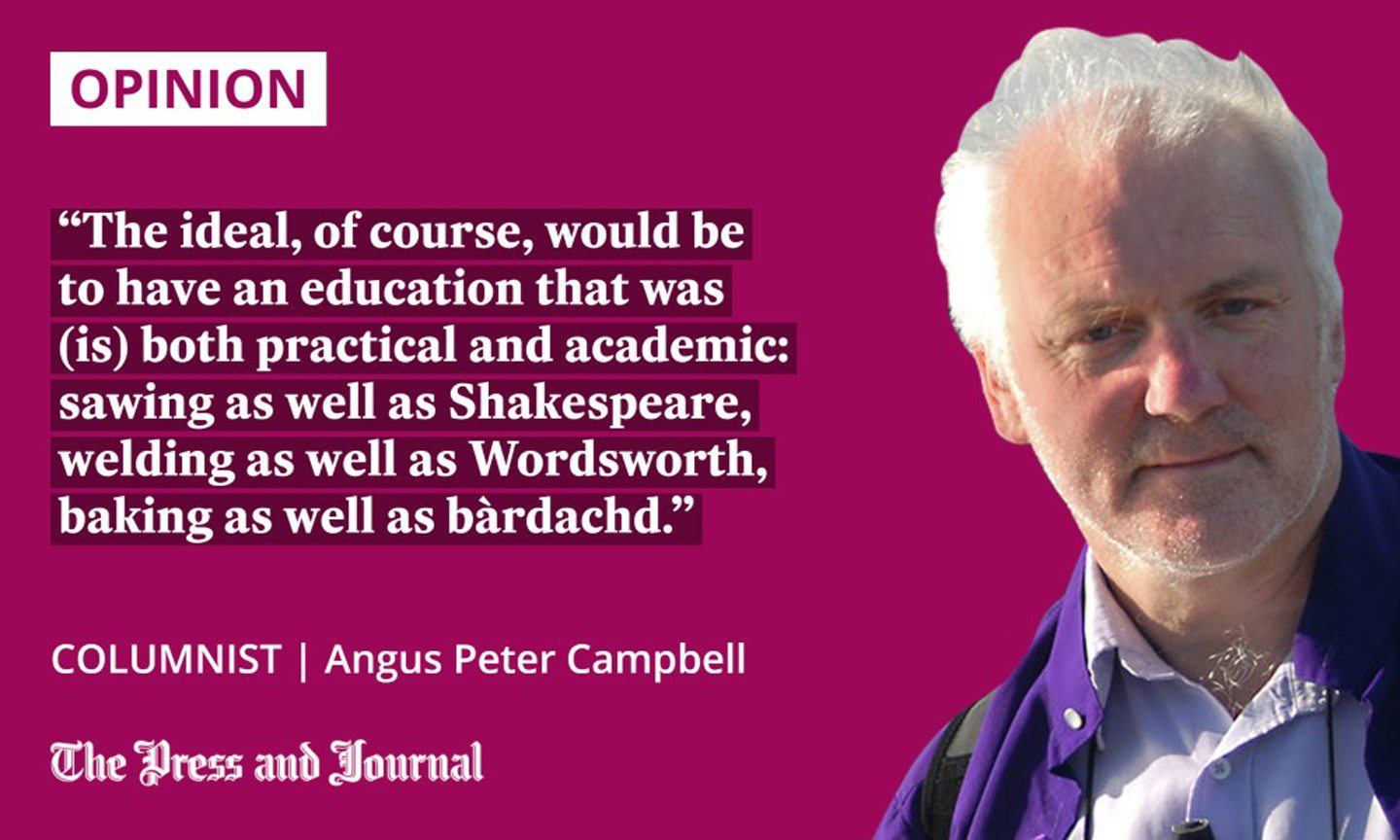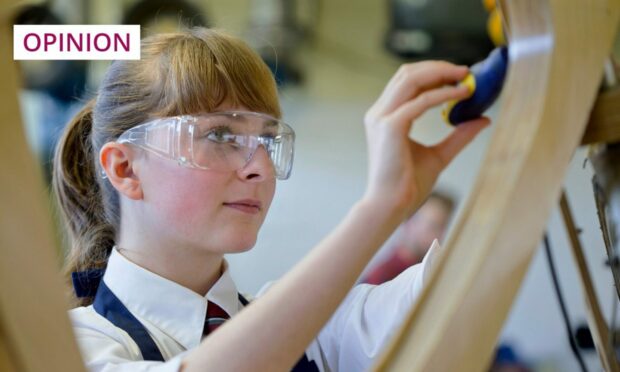I’m old enough to have done the 11-plus. For those of you who didn’t, it was a test you sat in primary seven which more or less decided your future.
If you passed, you then went into the A stream in your first year in secondary school. If you didn’t, you went into the B class, or C class or D class, depending on how big the school was.
I passed it, and so went on at age 13 to study the joys of amo, amas, amat, amabamus, amabatis, amabant, and then on to Cicero and Pliny in Latin, along with other classic delights. My younger brother, who didn’t pass, went on to the greater delights of studying and learning the marvels of navigation and woodwork and metalwork, out in the portacabins at the back of Oban High School.
There are signs out in the country in Australia and Canada (and no doubt elsewhere) which instruct you – after the rainy seasons, when the deep channels made by Land Rovers during the floods harden – to “choose your rut carefully, for you will be in it for the next 250 kilometres”. Once in the deep furrow, it’s impossible to get out of it.
Of course, it was possible to move from class A to class D, and vice versa, though I can’t think of a single instance where that happened in school. Those who were with me in class A in first year were still, as far as I remember, those with me in sixth year, and I can’t recall anyone ascending Jacob’s ladder the other way either. It was selective and unfair, on both sides.

From my point of view (as a supposed “academic success”), I greatly regretted, both at the time and even more so since, not getting the opportunity to do these practical subjects out in the portacabins. Equally, my brother missed out on carving his name and the famous ditty about Latin being a language as dead as dead can be, killing the ancient Romans and now killing me, on the old desks in room 14…
The ideal, of course, would be to have an education that was (is) both practical and academic: sawing as well as Shakespeare, welding as well as Wordsworth, baking as well as bàrdachd. Instead, we were harshly divided, as if education was a predestined road, leading some on the highway to Eton and others on the track to the peat bogs. I still prefer the latter. We could either have mince and tatties or apple crumble with custard, but not both.
We need a completely child and teacher-led approach
I’m not sure that things are all that much better decades on. There’s still only so much time in the school day, and it has to be divided up some way, so that my own children, once more, had to make that eternal choice between history and geography, and between art and science.
There is now much more flexibility than in my time, but it still seems that the fields are clearly distinguished, as with the crops: tatties here and turnips there, corn here and hay there.
But, since farming and crofting thrive on crop and field rotation, surely the same principle can be applied to education? I know it’s tempting to look over to the next field where the grass always seems greener, but I have no doubt that we have much to learn (once again) from Finland, where they appear to have a completely child and teacher-led approach, rather than one driven by endless government-led tests and gradings and tables and subjects and targets and outcomes and comparative systems.
One of the key things they did in Finland happened in 1979, when new educational reforms required every teacher to have a five-year master’s degree in theory and practice at one of eight state universities – at state expense. From then on, teachers were effectively granted equal status with doctors and lawyers. That, combined with individual teacher responsibility and flexibility and freedom, has helped make an educational system which is the envy of the world.
I know my east from my west and my dough from my yeast
Crucial though our school years were or are, there are always ways of getting out of the rut. Many of the wisest people I know left school at 14 and educated themselves, way before lifelong learning became a thing.
The greatest Gàidhlig storytellers I know learned their epics and their style orally, and many of the finest singers and musicians picked up their songs and tunes by ear at informal cèilidhs, rather than in any school.
Even I, while still enjoying Pliny and Cicero, have learned how to saw and plane and bake and navigate
And even I, while still enjoying Pliny and Cicero, have learned how to saw and plane and bake and navigate. I know my east from my west and my dough from my yeast.
Let education be holistic: gardening as well as grammar, cooking as well as calculus, head and hands working together, in unison.
Angus Peter Campbell is an award-winning writer and actor from Uist












Conversation